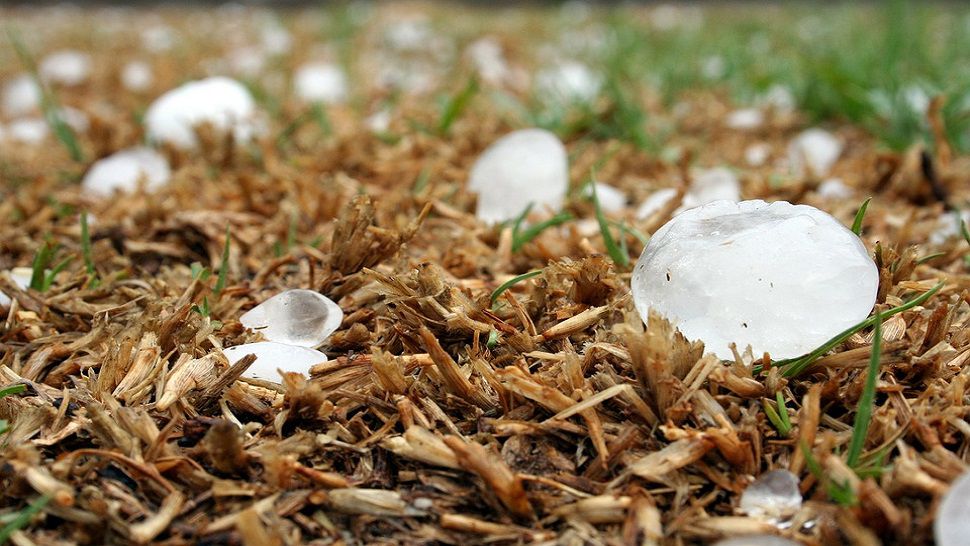
It was a beautiful sunset scene when we left the Pilgrim Inn on Deer Isle after a fine dinner tonight.


It was a beautiful sunset scene when we left the Pilgrim Inn on Deer Isle after a fine dinner tonight.

We’re staying in a nifty A-frame cottage on Weir Cove, in the Cape Rosier area of coastal Maine. The cottage is set back in the pine trees and spruces, with a great deck and heavenly breezes, only a short walk from the beach and its great views of the neighboring islands. It’s got all the modern amenities, too, except one: a dishwasher.
I kind of like that. Dishwashers are nice, of course, and I don’t think I’d want to be without one indefinitely, but for a short period not having a dishwasher is no big deal. It gives you a chance to roll up your sleeves and, if you’re like me, remember those childhood days in the pre-dishwasher era were all of the kids were assigned tasks, and washing and drying the dishes, silverware, and glassware was a staple on the chore list. Pulling dishwashing duty was a chance to put your hands in warm soapy water and attack the odds and ends that accumulate on plates and pots and pans. I can almost hear my mother advising me to “put a little elbow grease into it” after she’d inspected my initial effort on a plate or saucepan and found it wanting.
After some careful scouring, the dishes are rinsed and put into the dish rack to begin the drying process. After all of the dishes are cleaned, it’s time to take the dish towel, dry them off, and give each item a careful review and analysis of whether an additional dip in the water was needed to pass Mom’s white glove evaluation. After the cleaned dishes, glasses, and silverware were put back into the cupboards and drawers, each in its own place, it was time to rinse down the sink, empty the food catcher in the drain, savor the afterglow of a job well done, and then get ready to watch Batman.

A big rainstorm rolled through last night–a real “gullywasher,” my grandmother, who hailed from Uhrichsville, Ohio, might have said–and it left the Cape Rosier area feeling clean and washed this morning as the sun rose over the inland hills. Yesterday was unseasonably warm for this part of Maine, with the temperature touching the 80s, and it was downright humid by coastal standards. That means the coast was experiencing about 1/100th of the humidity you get in the Midwest on a high summer day, so the cool, crisp feeling this morning was welcome and energizing.
I walked barefoot down the winding asphalt road to the little cove, letting the rough surface of the road stimulate the nerves on the soles of my feet. Half of the cove was in sunshine, half was still in shadow. A large flock of seagulls was camped out on the mudflats that were exposed because the tide was out. Occasionally one of the birds would launch itself into the air, circle the cove, then land again. It was as quiet as a church, and even the gulls were maintaining a respectful silence on a beautiful late July Sunday morning.


Today I am starting the day with a cup of coffee—of course. And as I savoring the rich, warming, energizing brew, I am thinking: what would mornings be without coffee?
Once I knew the answer to that question, but that understanding has been lost in the enveloping mists of time. Obviously, I wasn’t guzzling java as a kid. When did I drink my first real cup of coffee, anyway? It must have been in high school, because I’m pretty sure I was fully into the coffee habit by college. And I also think the coffee routine was like flipping a switch. There was nothing occasional about the early days; once I drank my first cup I never stopped. No matter where I’ve gone, I want to start the day with multiple cups of Joe. The coffee pot became the highest priority appliance in the kitchen, and the lifelong effort to accumulate as many random coffee cups as possible was underway.
One of my friends stopped drinking coffee when he retired. I can’t imagine trying to do that—much less accomplishing it. I think that once my coffee switch was turned on, there is no going back.

This morning I visually confirmed that not much is happening in downtown Columbus at 3:45 a.m. Good driving conditions, though.


Congress conducted a hearing yesterday into UFOs–or, in the words of the people who testified before a House of Representatives Oversight subcommittee, “unidentified aerial phenomena” (“UAPs”)–and the very tantalizing claims made during the hearing are going to give a big shot in the arm to conspiracy theorists.
One witness, a former U.S. intelligence official testified that he is ‘absolutely” certain that the U.S. government is in possession of UAPs, and that the government redirected money from other programs to fund a secret, decades-long effort to recover and rebuild crashed UAPs. Although the witness admitted he has not personally seen a UAP, he says he has interviewed people who were injured by UAPs and people who have recovered “nonhuman biologics” from crashed UAPs. The witness also said he and his wife saw things that were “very disturbing.” The Pentagon has said that the witness’ claims are false.
Other witnesses said that both military and commercial pilots have seen UAPs, that we need a transparent program for reporting the incidents, and that briefing pilots about prior UAP incidents will help to prepare them for potential encounters. Another witness, a former Navy pilot, related his 2004 encounter with a UAP that looked like a gigantic Tic Tac in the sky and maneuvered and traveled using technology beyond our capabilities. In connection with the hearings, other individuals have claimed that the U.S. government is in possession of technology “that did not originate on earth” and have described encounters with other strange airborne craft.
So, will Congress take steps to the bottom of the UAP issues, tell us whether a government installation like the legendary “Area 51” actually exists, and investigate to the point where it can either confirm or debunk these claims and let the American public know what the government is doing? I’d like to see more transparency from the government generally, but I’m not holding my breath about the disclosure of UAP information–whatever it actually is–from official sources, even if the hearing indicated that there is bipartisan support for doing something. Experience teaches that the federal government often concludes that we would be better off if we were blissfully unaware of things that have really happened. When it comes to a conspiracy-rich topic like UAPs, I just don’t think that patronizing attitude is going to change.

President Biden’s problems with his dogs continue.
In 2021, the Bidens had to send their dog Major back to Delaware after he bit the hand of a Secret Service agent. Now the news media is reporting that the Biden’s new dog, Commander, a German Shepherd that the Bidens have had since December 2021, has had even greater behavioral problems. The Department of Homeland Security has released documents showing that Commander has been involved in ten different incidents where he has attacked, and in some cases injured, Secret Service agents.
The documents describe incidents that will sound familiar to anyone who has had the misfortune of dealing with hyper-aggressive dogs, in which Commander has charged and bitten agents. In one incident last November, Commander bit one agent twice, causing the agent to ultimately seek treatment from White House medical staff and the hospital, and agents ultimately had to use a steel cart to shield themselves from the charging dog. In an incident in December in a White House garden, in the presence of President Biden, Commander was let off his leash and attacked and bit a Secret Service agent on the forearm and on the thumb.
The First Lady’s spokeswoman, Elizabeth Alexander, responded to the reports on the attacks by saying: “The White House complex is a unique and often stressful environment for family pets, and the First Family is working through ways to make this situation better for everyone.” That the White House is a unique and often stressful environment is undoubtedly true generally, and especially so now for Secret Service agents whenever Commander is around–which makes you wonder if the presence of the dog could be distracting agents from doing their job of protecting the President and his family.
As for Commander and Major, there’s an unfortunate pattern here. Given the special nature of the White House, living there would be a challenge for even an exceptionally well-trained dog–and Commander, with multiple biting incidents in his record, clearly doesn’t fall into that category. It’s just not fair to ask people to work in a setting where they know they might be bitten by an aggressive dog. It would be best for Commander, the Bidens, and the Secret Service, if Commander were adopted by a new family that lives in a quieter place where his aggressive tendencies aren’t being provoked and the Bidens simply kept their cat, Willow, as the family pet.

We’ve been having some severe summer weather in Columbus recently. It’s an annual summer occurrence: thunderstorms rumble through, the sky darkens to a pitch-black color, the clouds grumble and flash as if the gods were bowling, and then heavy rain follows. In many of the storms, the rain is the “big, fat” rain that Forrest Gump mentioned in his description of Vietnam–drops so huge that they seem as big as softballs.
But you know you’ve been in a whopper of a storm when, as has happened in Columbus recently, hail is part of the mix. If you’re inside, hail has a unique pelting, rattling sound as it strikes outer walls and rooftops, but if you’re outside–say, a kid playing baseball–you cover your head and run like crazy to the nearest shelter until those frozen pellets stop hurtling down. Gene Kelly might have sung about being in the rain and Bing Crosby might have sung about snow, but nobody sings about being in the hail. It hurts and, I can assure you, the novelty of being bombarded by ice pellets quickly wears off. Cars and rooftops aren’t fond of it, either.
The only positive about a summer hailstorm is that it typically cools things off, which is always welcome during the summer. But the heat returns, and every summer, so do the occasional bouts with hail. It’s just part of the glory of the Midwest.

Yesterday we had tickets to see Oppenheimer, the new film about J. Robert Oppenheimer, the “father of the atomic bomb.” I had reserved seats for the 70mm showing of the film at the Gateway Film Center on the OSU campus. I knew there would be a full house, because the only seats available when I made our reservations on Saturday were in the second row from the screen–but we wanted to see the movie, so what the heck?
When I got to the theater yesterday, however, I was greeted by a pleasant young woman who told me that, regrettably, the air conditioning at our particular theater wasn’t working very well. Technicians were working on it, she explained, but right now the temperature in the theater was about 79 degrees. She gave us free passes for a future film, to account for the inconvenience, but said it was totally up to us to decide whether to try to watch the film now, given the current conditions.
So: do you go see a movie that you really are interested in seeing, and sit in a theater that starts out at about 80 degrees?
We voted no. We figuring that even if only some of the ticketholders went, the accumulated body heat would cause the temperature in the room to soon rise above the 80-degree mark, and I hate being in uncomfortably hot, sweaty rooms. Add in the fact that Oppenheimer is fully three hours long, and that one of the reasons you go to a summer movie is to get away from the heat, and it wasn’t a hard decision to give the movie a pass.
Kudos to the Gateway Film Center, though, for handling the situation very professionally. In addition to the free passes, a helpful employee in the ticket center reversed my purchase order, and they were apologetic and cordial as I left.
I wonder how many people in that full theater decided to try watching the movie under those conditions? I still want to see Oppenheimer, but I’ll wait for the chance to watch it in true, air-conditioned comfort.

Medical studies often find curious correlations between different activities or practices and health conditions. A recent study identified an apparent linkage between brain function and bowel movements: chronic constipation is associated with cognitive decline, and for that matter too-frequent toilet trips are, too.
A study that was presented at the 2023 Alzheimer’s Association International Conference looked at data collected from thousands of American adults who recorded information about their health habits and took cognition tests. The study found that people who go three or more days between bowel movements (yikes!) are 73 percent more likely to score lower on cognitive tests than people who are on a once-a-day routine. The constipated group had declines in brain function equivalent to three additional years of aging in comparison to their regular peers. The opposite problem isn’t much better–people who typically head to the head two or more times a day are 37 percent more likely to score lower on cognitive tests than those blessed with daily regularity.
Correlation is not causation, of course, and it is possible that other factors–like the amount of exercise a person gets, which can affect both cognition and bowel activity–could be the actual reason for the findings in the study. It’s also possible, however, that there is an unknown connection between the number and activity of gut microbes that toil in the human digestive system and healthy brain activity.
There is a lot we really don’t know about the interconnectedness of the different, complex systems that make up human physiology. But just to make sure you aren’t running any unnecessary risks, you might want to drink more water, add a bit of fiber to your diet, and make sure you get your steps in every day.

I went to the Main Library to pick up some books today, and they had a collection of farm animals in temporary pens on the front lawn. The turkey, pig, sheep, goats, rabbits, chickens, and ducks were there for the kids as part of the library summer reading program.
My favorite creatures in the menagerie were the white-crested ducks, pictured above. One of the kids excitedly told his mother that “they look like George Washington”—and he was right. The white crests looked just like the powdered wigs worn by the Founding Fathers.
Of course, another kid said they looked like Donald Trump, but never mind that.

There was a big stink at the Franklin Park Conservatory this week. The Conservatory’s titan arum–which also goes by the pleasant nickname “corpse flower”–was briefly in bloom, attracting gardeners, horticulturalists, and members of the general public who are curious to take a whiff of a huge plant that, when in bloom, has the distinctive smell of rotting flesh.
The blooming of the “corpse flower” drew some big crowds for the Conservatory, but timing is everything: titan arum (which has the scientific name Amorphophallus titanum) only blooms for a day or so, and if you miss it the plant loses both the bloom and the odor, and ends up looking like a gigantic, unshucked ear of corn. In the Midwest, anything that looks like an ear of corn in the summer is nothing special.
Amorphophallus titanum, an example of which is shown above, is an interesting plant, separate and apart from its creepy nickname. It is native to Sumatra, Indonesia, and in its native habitat it can grow up to 12 feet tall–although its native territory is shrinking due to logging and the conversion of jungle habitat to oil palm plantations, making the plant endangered. It is an inflorescence plant, which means it consists of multiple flowers acting as one, and it generates heat as well as its potent smell. According to the U.S. Botanic Garden, the heat and the smell of the plant “efficiently lures corpse-attracted pollinators, such as carrion beetles and flies, from across long distances.” Nice!
Like many things in science and the environment, Amorphophallus titanum is both cool and slightly disgusting, all at the same time. If you missed seeing and smelling it this time around, you’ll need to wait for a year or two or three until the plant decides to bloom again.

Where did domestic chickens come from? The egg, of course. But scientists also have debated the source species for domestic chickens, and wondered about when the birds became domesticated–and why.
Some recent studies summarized by Smithsonian magazine shed light on this tantalizing question–and raise some interesting additional issues. The studies determined that the remote ancestor of today chicken’s was the red jungle fowl (Gallus gallus spaedicus), shown above, a member of the pheasant family. According to dating of bones found at ancient archaeological sites, the bird was first domesticated 3500 years ago in southeast Asia, in a town in central Thailand called Ban Non Wat. The farmers in the Bronze Age civilization in Ban Non Wat used a dry rice farming technique that inevitably attracted the jungle fowl in the vicinity, ultimately leading to domestication. From southeast Asia the birds spread west; remains of the birds from an Etruscan site date to 2800 years ago.
Interestingly, the ancient remains of the chicken’s distant ancestors were found, whole, in human burial chambers. That finding suggests that the birds had a different cultural and social significance than modern chickens, and may have been kept as exotic pets or sacred creatures–which is contrary to the standard assumption that the birds were domesticated to serve as a simple source of eggs and meat.
That finding is also a bit disturbing, however. It means that, at some point in the past, a hungry human looked at the sacred bird in the household and wondered what it would taste like. Once that person yielded to temptation, killed and cooked up the fowl, and took a bite of the meat with a bit of seasoning, all bets were off and sacred status went out the window.

The Stanford Daily is reporting that Stanford University’s President, Marc Tessier-Lavigne, will resign in the wake of allegations of manipulated research data and will retract or issue corrections on several papers for which he was the principal author. The resignation comes after a Stanford investigation and report about Tessier-Lavigne’s research and conduct. The Daily described the key findings of the report as follows:
“’At various times when concerns with Dr. Tessier-Lavigne’s papers emerged—in 2001, the early 2010s, 2015-2016, and March 2021—Dr. Tessier-Lavigne failed to decisively and forthrightly correct mistakes in the scientific record,’ Stanford’s report said, identifying a number of apparent manipulations in Tessier-Lavigne’s neuroscientific research.
“The report concluded that the fudging of results under Tessier-Lavigne’s purview ‘spanned labs at three separate institutions.’ It identified a culture where Tessier-Lavigne ‘tended to reward the ‘winners’ (that is, postdocs who could generate favorable results) and marginalize or diminish the ‘losers’ (that is, postdocs who were unable or struggled to generate such data).’
“The report concluded there was no evidence that Tessier-Lavigne himself manipulated data in the papers reviewed, nor that he knew about manipulation at the time. But the report noted Tessier-Lavigne ‘has not been able to provide an adequate explanation’ for why he did not correct the scientific record when presented the opportunity on multiple occasions.”
The resignation of Stanford’s president following data manipulation allegations is the latest black eye for the scientific world, which has faced increasing scrutiny over questions of exactly how data was obtained and whether findings in research can be replicated by other scientists. An article published earlier this year by the American Council on Science and Health, entitled How Scientific Is ‘Peer-Reviewed’ Science?, includes this summary: “‘Peer review’ of scientific articles before publication is often considered the ‘gold standard’ of reliability, but its luster has become tarnished by greed – the desire of the research community to tap into research funds, the pressure on scientists to publish or perish, and publishers of scientific journals seeking to maximize profits.” The article states, in its first paragraph, that “improper manipulation of statistics is pervasive” and “can do great damage when it corrupts the so-called ‘scientific literature.’”
That’s obviously true, but there is a deeper damage being inflicted, too: damage to the notion that scientists are engaged in a kind of voyage of discovery and search for the truth, and will objectively gather data and do dispassionate analysis of it. Data manipulation to win grants or burnish reputations or make a splash in the news media destroys societal trust in scientific results–which obviously is not a good thing. The scientific community needs to take a hard look at itself and its practices and address the root causes of what has become a significant problem.

The Cleveland Browns announced yesterday that, during this upcoming season, they will wear white helmets with brown and orange stripes down the middle for three of their games. The helmets, which are similar to the helmets the team wore in the 1940s, will be the first time the Browns players haven’t worn orange helmets in more than 70 years.
In the sports world, this is called a “throwback” look. In the NFL and the NBA and Major League baseball and college football, throwback uniforms have generally received positive reviews from fans, who seem to like the nostalgia. LeBron James, for example, has issued a rave tweet about the Browns’ white helmets, complete with ten fire emojis. And savvy team owners know that the throwback uniforms give fans an excuse to buy yet more gear for their favorite team to add to their collection.
Since throwback uniforms have been well received in the sports world in America, why not broaden the concept to encompass the country at large? On a given Throwback Thursday, for example, everyone could dress in 1940s outfits, with all men and women wearing hats and suits and dresses, like you’d see in The Maltese Falcon. And who wouldn’t welcome a ’60s throwback opportunity, with Nehru jackets and tie-dyed shirts and love beads and anything else that might have been worn to Woodstock, or a ’70s throwback, with platform shoes and monster bell bottoms and really bad haircuts?
I think we’re missing an opportunity here.